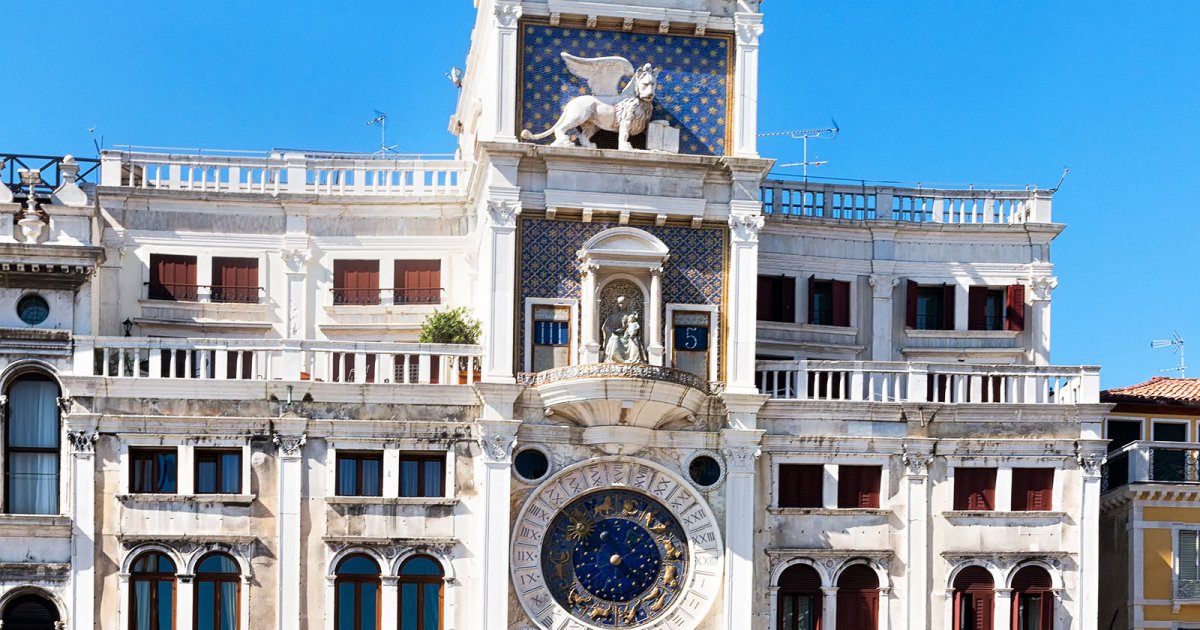ST. MARK'S, Clock Tower
 Language: English / USA
Language: English / USA
The Clock Tower, on the left side of St. Mark's Square if you're facing the cathedral, is one of the most famous symbols of Venice, and you can't avoid being fascinated by the ingenious mechanical system that moves the famous Mori, the two statues which strike the hour.
The Tower, which as you can see interrupts the long Procuratie building, is right at the entrance of the Mercerie that lead to the Rialto Bridge. It was built at the end of the 1400s by the Senate specifically to house the new clock, which was made by a craftsman from Reggio Emilia.
The two bronze statues that strike the hours are nicknamed "Mori" for their dark metal color, and stand on the terrace at the top of the building. The gigantic automatons have a body that's jointed at the waist so that they can twist their torso and move. The statues have been made with an exaggerated size and deliberately overloaded design so that you can distinguish their shapes even at great distances. The bell is topped by a golden sphere and a cross and was built by a certain Simeone, of which you can still make out the signature on the bronze.
The clock dial is enameled and golden and indicates the hours, moon phases, and apparent movement of the sun in the zodiac. The gold markings over an intense blue background stand out in size and precision: this highly effective solution was also replicated in the clock tower of Padua. Above the quadrant you'll notice a small semicircular terrace with a niche containing a Madonna with a golden bronze child, which is flanked by two windows indicating the hours. If you're in Venice during the week of the Epiphany and Ascension, don't miss the Magi show where they exit every hour from the left side door preceded by an angel, bend in front of the statue of the Madonna, and then go back into the other door.
FUN FACT: the two Mori that strike the bell are similar but not the same. One has a beard and is called "The Old Man", the other without a beard is called "The Young Man". The Old Man strikes the bell two minutes before the exact hour, representing time passed, and the Young Man strikes the hour two minutes later, symbolizing the time to come.



